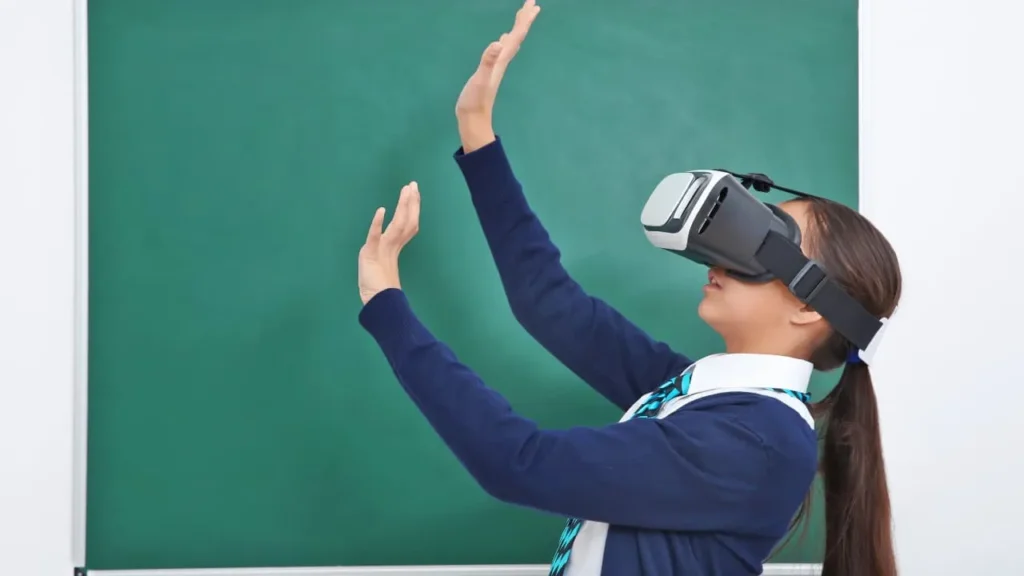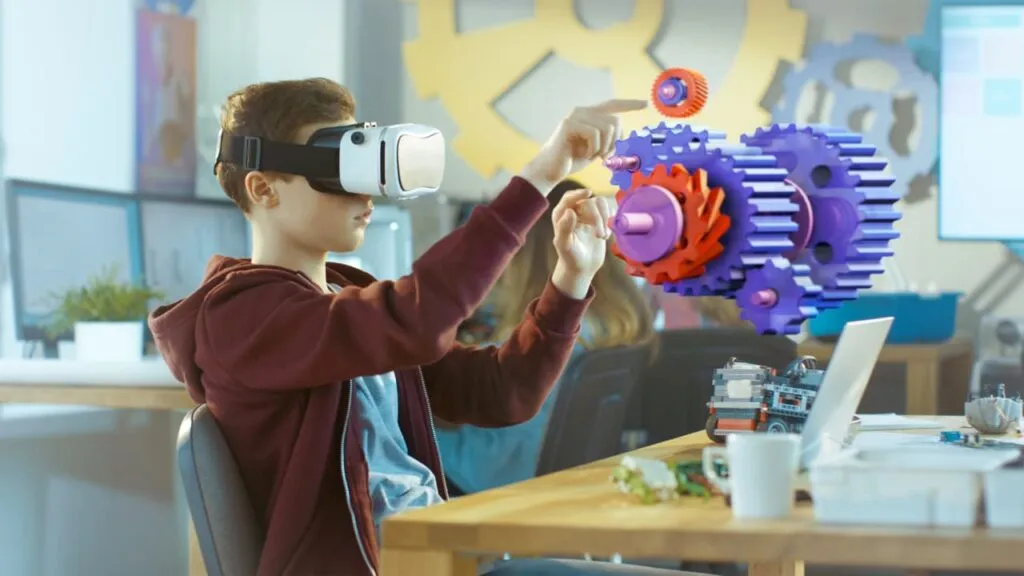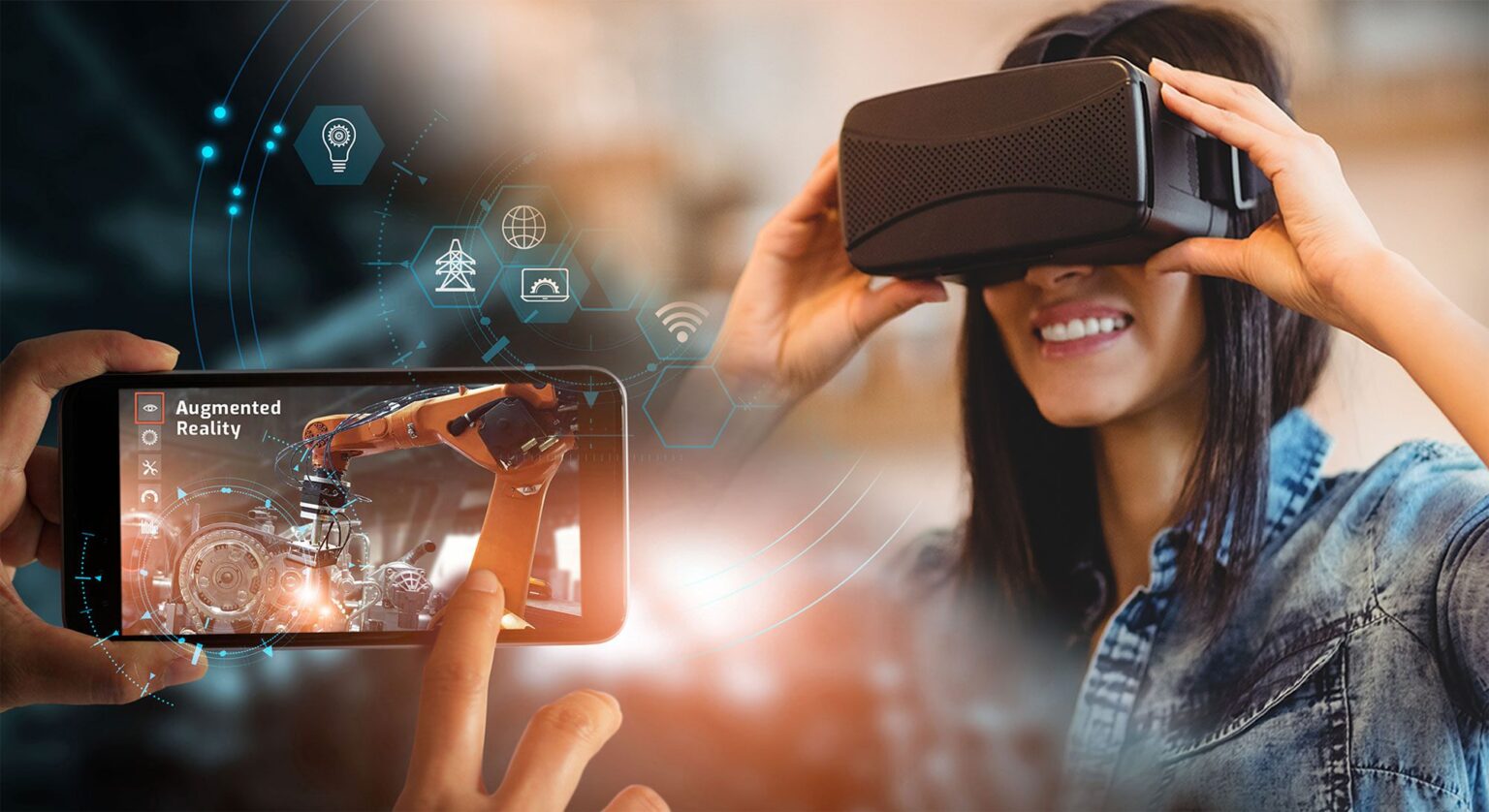Education is rapidly evolving around the world, and Oman is no exception. Among the many technologies shaping the future of classrooms, Virtual Reality (VR) stands out as a powerful tool for interactive learning. Imagine students putting on a headset and finding themselves walking through the streets of ancient civilizations, exploring the human body from the inside, or performing science experiments in a safe and engaging environment. This is not a futuristic dream anymore it is a reality that Oman is gradually embracing. VR is not just about entertainment; it is about creating learning experiences that are more immersive, interactive, and impactful than traditional teaching methods.
The use of VR in Omani education opens doors for students and teachers alike, giving them new ways to connect with knowledge and transforming learning into something enjoyable and memorable. With Oman’s growing investment in technology, its young learners have an exciting journey ahead, where classrooms are no longer bound by walls.
Understanding Virtual Reality in Education
Virtual Reality is a simulated environment that can be similar to or completely different from the real world. Through VR headsets, learners can enter digital spaces that provide hands-on experiences without leaving their classrooms. Instead of reading about the solar system in a textbook, students can take a virtual journey through planets and stars. Instead of imagining historical battles, they can witness them unfold in three-dimensional simulations.
The core advantage of VR in education lies in its ability to make abstract concepts tangible. It bridges the gap between imagination and reality by creating interactive scenarios where students are not just passive listeners but active participants in their learning process.
Why Oman Needs Virtual Reality in Classrooms
Oman, with its strong focus on youth empowerment and modern education, is at a stage where technology-driven learning can make a huge difference. Traditional teaching methods, though effective to some extent, often fail to keep students fully engaged in today’s fast-paced digital world. Learners crave experiences that match the technology they are already exposed to in their daily lives.
Introducing VR in classrooms addresses this gap. It helps students stay motivated, improves retention, and creates a deep sense of curiosity. For Oman, which is building a knowledge-based economy as part of Vision 2040, VR is not just a trend but a necessity for equipping the next generation with creativity, problem-solving skills, and adaptability.

Making Learning Interactive and Fun
One of the strongest appeals of VR is the fun factor. Education does not always have to be serious and rigid. In fact, students often learn better when they enjoy the process. VR transforms learning into an exciting adventure. For example, a geography lesson can turn into a thrilling exploration of mountains, deserts, and oceans. A biology class can become an interactive lab where students virtually dissect organisms or observe microscopic structures.
This sense of fun creates emotional connections with knowledge, making students more likely to remember what they learn. For Oman’s youth, who are already tech-savvy, VR ensures that education feels less like a chore and more like a journey of discovery.
Boosting Teacher Effectiveness
Teachers are the backbone of education, and VR empowers them to deliver lessons with greater impact. Instead of relying only on lectures and textbooks, teachers can design lessons that students actually experience. Imagine an Omani history teacher guiding students through the castles of Nizwa or Bahla using VR tours, allowing them to “walk” inside and observe details up close. Such interactive methods make teaching not only easier but also far more rewarding.
Additionally, VR allows teachers to explain complex topics more effectively. Difficult scientific concepts like chemical reactions or engineering models can be demonstrated visually, ensuring that students grasp the subject with clarity.
Preparing Students for the Future
The world is moving towards industries powered by technology, and Oman’s youth must be prepared for it. VR does not just help in academics; it prepares students for real-world skills such as problem-solving, teamwork, and adaptability. In fields like medicine, architecture, and aviation, VR simulations are already used globally for training.
If Omani students gain exposure to VR learning from an early stage, they will be ahead in their career readiness. They will develop confidence in handling technology, which is crucial in the modern workplace. By integrating VR into classrooms today, Oman is shaping a generation that is not only knowledgeable but also future-ready.
Overcoming Barriers in Adoption
While the potential of VR is enormous, it is important to acknowledge the challenges. Cost is one of the main concerns, as VR headsets and software require investment. Some schools, especially in rural areas, may face difficulties in accessing such advanced tools. There may also be a learning curve for teachers who are not yet comfortable with digital technologies.
However, these barriers are not impossible to overcome. With government support, partnerships with tech companies, and gradual implementation, VR can become more affordable and accessible. Training programs for teachers can also ensure that they are well-equipped to integrate VR into their classrooms effectively.
The Role of Oman’s Vision 2040
Oman’s Vision 2040 emphasizes innovation, creativity, and human capital development. Technology-driven education is a key pillar of this vision, and VR perfectly aligns with it. By adopting VR learning tools, Oman is not just enhancing its education system but also contributing to the larger goal of building a knowledge-based society.
The government’s focus on digital transformation in schools and universities signals a positive future where VR will play an important role. The seeds being planted today will bear fruit in the form of highly skilled and creative graduates who can contribute to Oman’s progress.

Transforming Higher Education and Professional Training
While VR is beneficial for school students, it also has significant applications in higher education and professional training. Medical students can practice surgeries in virtual environments without risks. Engineering students can design and test structures before building them. Tourism and hospitality students can explore global destinations virtually to understand industry practices.
For Oman, which is diversifying its economy, such training opportunities are invaluable. They ensure that graduates not only have theoretical knowledge but also practical skills that employers demand.
Inspiring Creativity and Innovation
VR is not just about consuming knowledge it also sparks creativity. Students can design their own virtual environments, create 3D models, and even develop VR-based projects. This hands-on creativity inspires innovation and entrepreneurship. Imagine Omani students designing virtual tours of their cultural heritage sites and sharing them with the world, promoting both education and tourism.
Such creativity not only builds confidence but also nurtures an entrepreneurial mindset, which is vital for Oman’s future economy.
The Emotional Impact of VR Learning
Learning is not just intellectual it is also emotional. VR experiences can evoke emotions that make knowledge stick longer. For example, a student virtually visiting refugee camps or environmental disaster zones may develop empathy and a deeper understanding of social issues. This emotional connection makes education more meaningful.
In Oman, where values of compassion and community are deeply rooted, VR can be a tool that strengthens both knowledge and character.
The Road Ahead for Oman
The journey of VR in Omani education is just beginning, but its potential is limitless. As more schools, universities, and training centers adopt it, students will find themselves in classrooms that look very different from today. Instead of static blackboards and textbooks, they will experience dynamic simulations and immersive environments.
Parents, too, will see the difference in their children’s enthusiasm for learning. Teachers will discover new joy in their profession as they watch students actively engage and succeed. Oman, as a nation, will benefit from having a new generation of learners who are not only educated but also inspired, curious, and ready to face global challenges.
Conclusion
The use of Virtual Reality for interactive learning in Oman is more than just an educational experiment—it is a powerful step toward a brighter future. By making learning immersive, engaging, and practical, VR transforms classrooms into spaces where curiosity thrives and knowledge comes alive. Despite challenges, the opportunities are immense, and with Vision 2040 guiding the way, Oman is well on its path to becoming a leader in innovative education.
Virtual Reality is not just technology; it is a bridge between imagination and reality, between theory and practice, and between the present and the future. For Oman’s students, this bridge leads to limitless possibilities.
Do follow Gulf Magazine on Instagram.
Also Read – Oman’s Bold Strategy: Preparing Students for AI Success



